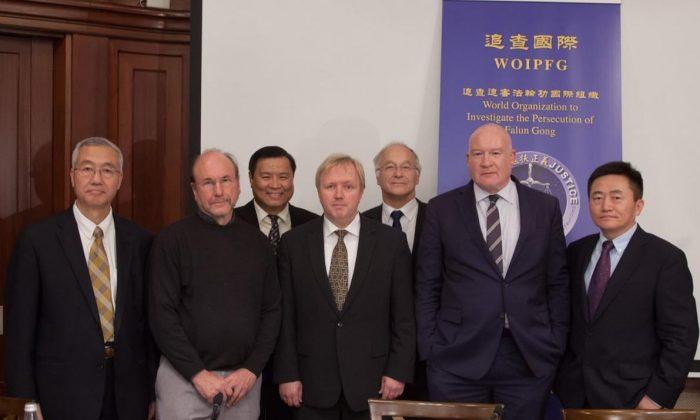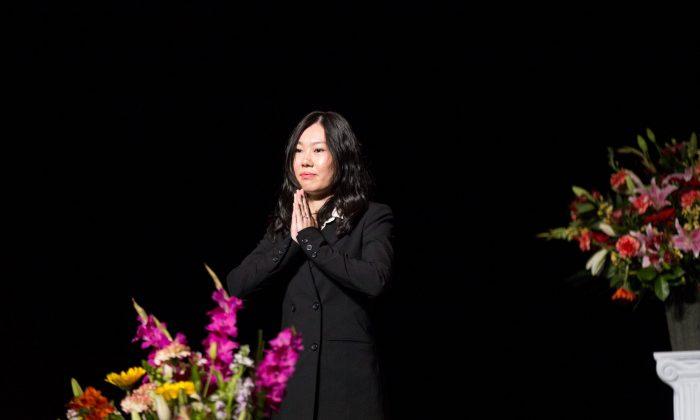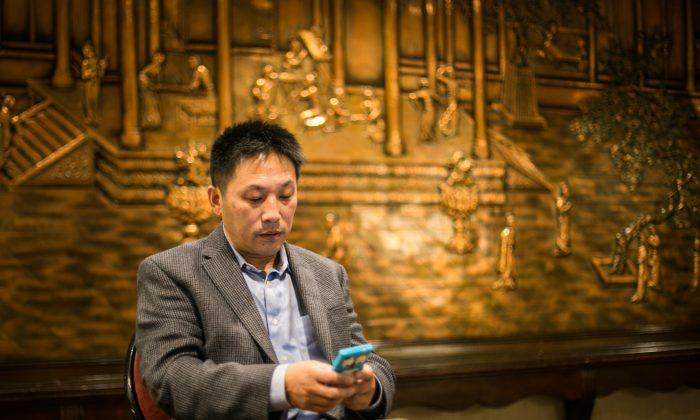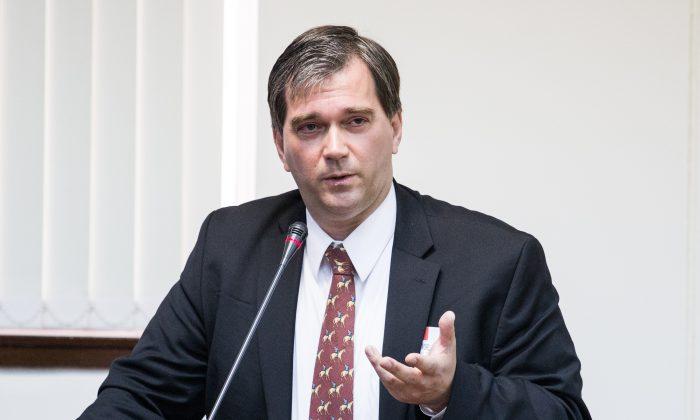
SAN FRANCISCO—Grassroots organizations in Chinatown are working hard to get the vote out for interim Mayor Ed Lee—work that includes filling out ballots for voters, collecting vote-by-mail ballots and submitting them for voters, and having staff that split time with Ed Lee’s official campaign organization.
The two organizations that have played the biggest role in marshaling the vote for Lee in Chinatown are the Chinatown Community Development Center (CCDC), which receives millions of dollars each year in city funds, and the Community Tenant Association (CTA), which has 1,000 activists embedded in neighborhoods throughout the city, and especially in Chinatown. CCDC says it works “extensively” with CTA on issues such as tenants’ rights.
‘Helping’ Voters
On Oct. 23 Epoch Times reporters were given a demonstration of how CTA supports Ed Lee’s campaign.
Outside the Gordon J. Lau elementary school on Clay Street, two Epoch Times reporters presented themselves as prospective voters and asked how they could vote for Ed Lee. A friendly woman quickly appeared to help out. She produced a list of names and phone numbers that had been printed from a computer, and, pointing to the title, explained that she was a CTA activist.
She called someone to come to open the official Ed Lee campaign office, which was across the road.
In the five minute discussion that followed, as Lee campaign office workers arrived, she blithely explained her door-to-door activism as part of her CTA “work unit” on behalf of the Lee campaign.
“If people can’t move, we help them vote,” she said. When asked to clarify, she explained that “helping” might mean to simply have an elderly or disabled person sign and date their ballot, and then she or her people would take it away to fill it out and mail it in. She was asked the same question three times in different ways, and each time affirmed that that is indeed what she meant.
After the Lee campaign workers arrived, she settled into a chair in the office and began chatting with others present. The woman who opened the door to the Lee campaign office was an activist from the CCDC.

The two organizations are closely linked, with the CTA running a de facto office out of the community room in a CCDC building.
In that room on the second floor of 777 Broadway, CTA’s paraphernalia is plastered on the walls and sits among the furnishings: an organizational map, a big red sign, a list of board members complete with photographs, a list of donated monies (to what was unclear), an “ideas box,” and Ed Lee campaign literature, along with handwritten announcements for meetings in support of Lee’s bid for mayor.
Gen Fujioka, public policy manager at CCDC, said he was not aware of the CTA material in the community room, and says that political advertising is not allowed at their buildings.
Voting from Home
CCDC’s mission is “to build community and enhance the quality of life for San Franciscan residents,” according to its website. Primarily serving Chinatown, CCDC says it plays “the roles of neighborhood advocates, community organizers, planners, developers, and managers of affordable housing.”
Canvassers for rival mayoral candidate Leland Yee made news when they reported CCDC staff was involved in helping residents vote.
Andy Li, a volunteer canvasser for Yee, said that many residents at CCDC buildings where he went door-knocking had already handed in their ballots to building management.
One address he identified included 1303 Larkin, a CCDC shop.
Elderly Chinese residents at that building, in the week of Oct. 9 to Oct. 16, repeatedly mentioned to Li how they had given over their ballots to CCDC, he said.

Other times the old people would say “I don’t need your explanation, someone from CCDC is going to help us,” Li said. Residents repeatedly told Li that every election they take their ballots to CCDC headquarters.
Li recollected that some of the residents he spoke with simply said that they had taken their ballots to an address with “777.”
The CCDC building at 777 Broadway appears to be the focus of much of the get-out-the-vote activity in Chinatown, and sets an example of voter involvement. On its website CCDC states that it keeps 31 studio apartments there. According to voter records, there are 33 registered voters, and 31 of them vote by mail, which is a percentage of 93.9 percent (the percentage in the population at large is 46 percent). By Oct. 24, 60 percent of them had cast their ballots, while 6 percent of the rest of the city had done the same.
A Yee canvasser who, because she lives in Chinatown does not want her name published, said that she had been told by several elderly residents that they would go to the 777 building for help with voting.
An Epoch Times reporter also heard a recommendation to visit 777 Broadway after casually striking up a conversation with an old Chinese woman about where to vote, near the northern Ping Yuen public housing block.
On its website, CCDC published a statement denying the “reckless and unfounded accusations made by the Yee campaign,” saying, “Our staff does nothing that even resembles collecting or tampering with ballots nor does our staff promote any candidates for office.”
The Epoch Times was unable to confirm the allegations against CCDC at 1303 Larkin, though two residents there said that they had signed their ballots and given them to workers from On Lok, a health care agency for seniors in San Francisco. They had not filled them out, and indicated that the health care workers would take care of that and mail them in. The spokesperson for On Lok Lifestyle did not respond to a request for comment.

At 1590 Broadway, a CCDC building, two residents recounted others filling in their ballots, in phone calls with The Epoch Times. Both were women over 80.
A resident from 1590 Broadway said that “The building people helped me fill it out.” She said “I’m over 80, I don’t know anything.” She said that it was filled out for her in support of Ed Lee—which she did not indicate she dissented from—and given back to her so she could mail it in. When asked whether “building people” referred to CCDC staff she said that someone was at the door, she was busy, and had to go.
The other elderly woman said that three weeks ago she was paid a visit by a CTA activist. After she signed her ballot she gave it to the person, who said they would fill it out and mail it in for her. She said she knew who they would fill it in in support of, but did not state who that was. She said: “They said they'd collect them and send them in together.”
Twenty absentee ballots from 1590 Broadway arrived at the elections department on Oct. 24.
Another example of ballots from a CCDC building arriving simultaneously comes from the 777 Broadway building. Nine of the building’s 31 ballots came in on the same day, Friday Oct. 21, while 10 more came in at once on Monday, Oct. 24. If this was a coincidence, it would mean that a third of the building on two consecutive days mailed their ballots in at the same time.
California election law prohibits organizations working for a candidate’s election from returning a vote-by-mail ballot for a vote and also prohibits soliciting the vote of a vote-by-mail voter while in the voter’s presence or residence.
Yee volunteers also said that at 441 Ellis, which is not a CCDC building, management allowed Lee volunteers to invite all residents to the common room to watch a pro-Ed Lee video under the guise of “voter education.” Two Epoch Times reporters spent an afternoon at that building knocking on doors and found that there was indeed an introduction to voting, but no evidence to substantiate the claim that it included pro-Lee campaign videos.
Pressing the Button
Aaron Peskin, former supervisor in District 3, an area where both CTA and CCDC operate, explained the exchange between the community activists and the elderly tenants. “You do your good work throughout the year helping tenants, and when it comes to an important election... you press the button,” he said.
The activities of the CTA in getting out the Chinatown vote have won rave reviews in certain quarters.

The Chinese-language newspaper Sing Tao boasts about the power of the CTA network. It got out the vote for Jane Kim in District 6 in late 2010, one article indicates: “Every time it was with over 50 people, and in the two months before the election they carpeted the area pulling votes, including door-visits, phone calls, and street activism.”
CTA campaigners worked shoulder to shoulder with Jane Kim’s people, the article said. “In the end Kim was triumphant. CTA expended efforts, and gained in return.” Kim is a former CCDC staffer, and her website notes her support from Norman Fong and Gordon Chin, current and former heads of CCDC.
David Chiu is also a fan. In the overseas edition of People’s Daily, a Chinese-language version of the Chinese Communist Party’s main mouthpiece, he is quoted as saying: “The CTA is an iron vote in District 3.” Chiu is supervisor of District 3, which encompasses Chinatown.
In both cases it was CCDC’s “senior community organizer” David Ho behind the mobilization efforts. “He’s their community organizer, which in the parlance of the street means he’s the guy who cracks the whip,” says Luke Thomas, who runs the Fog City Journal website and is a regular presence at Chinatown events.
The elderly residents of CCDC buildings are frequently mobilized by David Ho or others for these events. They sometimes appear visibly bored, chatting among themselves or napping, oblivious to the proceedings, which take place in English.
The former head of CCDC, Gordin Chin, has been a high-profile supporter of Ed Lee. He co-chaired the Run Ed Run campaign, which was meant to show grassroots support for Ed Lee reneging on his promise not to seek election as Mayor.
Fujioka said that Chin’s political views are not those of CCDC.
But official photos for the Run Ed Run campaign were taken on CCDC premises, using CCDC residents, in the presence of CCDC volunteers, confirmed photographer for the campaign Luke Thomas, responding to Epoch Times inquiry. (Ho is a close personal friend of Rose Pak, the Chinatown éminence grise that, according to Mayor Lee, pushed him into the race.)
Fujioka said that CCDC did not mobilize those residents for the photo shoot. “We don’t control them,” he said.

Federal law prohibits 501(c)3 not-for-profit organizations (CCDC is one in good standing; CTA was decertified after it failed to file income tax returns for three years running) from showing favoritism for one candidate or political party, providing either financial or in-kind support to a political candidate, or coordinating efforts with a candidate or political party.
Mixed Staff
Mr. Leung Wing Hoo is the president of CTA. Along with his tenancy activism Mr. Leung spends time at Ed Lee’s campaign office on 943 Clay Street, popping in and working alongside other staff.
In the times that Epoch Times reporters have visited that office, it has often been unclear who is paid staff and who is a community volunteer just helping out. Staff have not responded favorably to questions attempting to find out.
A worker for the Lee campaign is pictured on the website of the CCDC, appearing to be a graduate of a Grassroots Leadership Training course. Norman Fong, CCDC director, has his arm slung over her shoulder.
Other photographs from CCDC confirm her affiliation: in the organization’s own defense of its work on the Central Subway project, she is identified as either staff or volunteer—CCDC has not confirmed which. Fujioka, the spokesman, said she’s not management.
She has keys to the Ed Lee campaign office on Clay Street, and was observed opening the door and leading others in by two Epoch Times journalists on Oct. 23. She worked there that day and others.
Tony Winnicker, the spokesperson for Ed Lee’s campaign, refused to address or deny the details of this story.
The CTA could not be reached for comment.
A few days after the Chronicle reported possible ballot tampering by independent expenditure groups working on behalf of the Ed Lee campaign, workers at the Ed Lee office expressed an awareness that their activities might come under suspicion. An Epoch Times reporter had been shown a ballot there on Oct. 22.
On Oct. 23, when asked about seeing another ballot, the woman said that they don’t have any, and loudly proclaimed that “Everyone’s vote is their choice. We do not fill out ballots for anybody.”
With additional reporting by Ariel Tian.





Friends Read Free